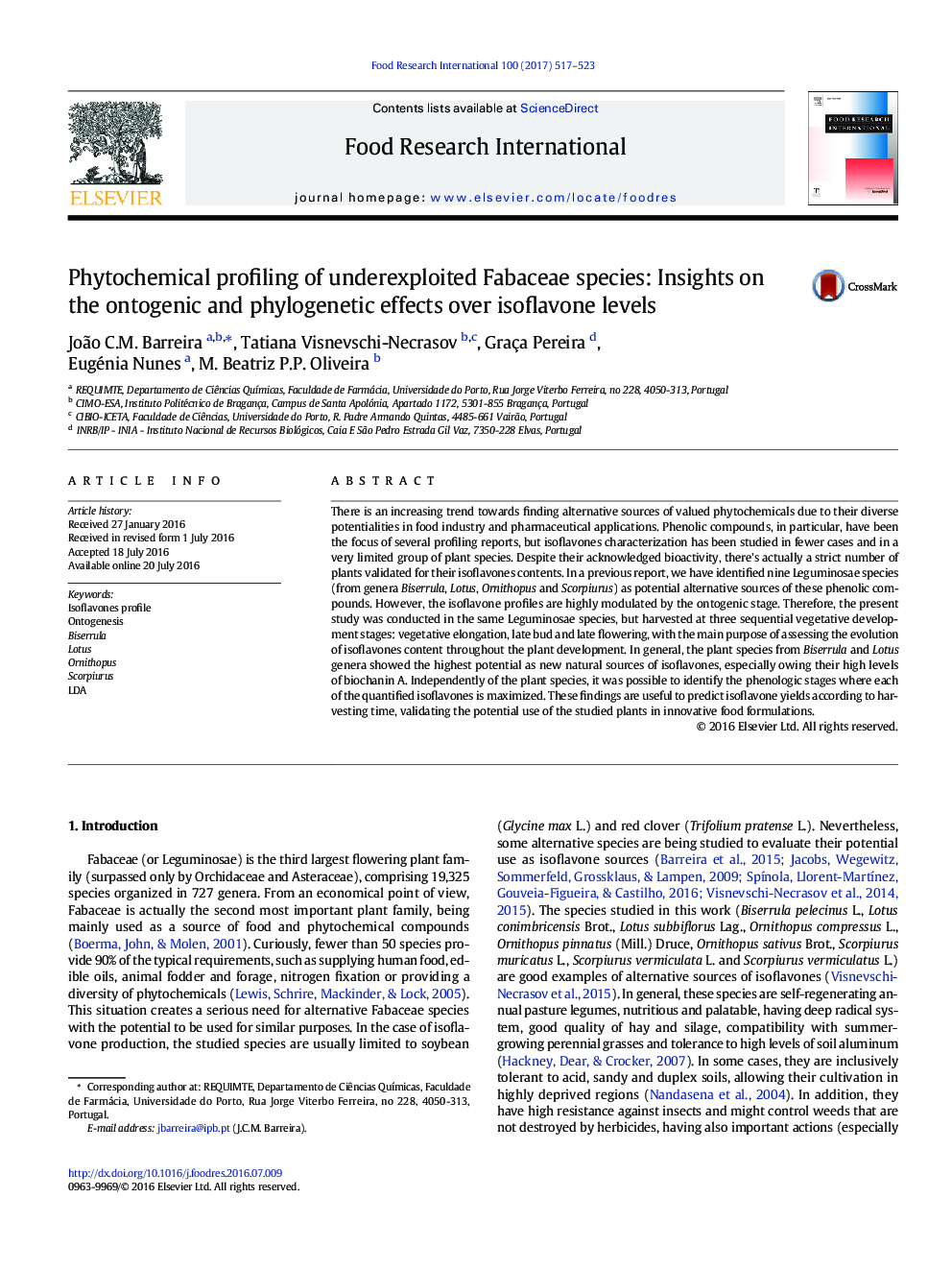| کد مقاله | کد نشریه | سال انتشار | مقاله انگلیسی | نسخه تمام متن |
|---|---|---|---|---|
| 5767749 | 1628451 | 2017 | 7 صفحه PDF | دانلود رایگان |

- New high-potential isoflavone (particularly biochanin A) sources were identified.
- Biserrula and Lotus genera showed the highest potential for isoflavone production.
- The ontogenic stage that maximizes the level of each isoflavone was identified.
- Phylogeny and ontogenesis showed high interaction in modulating isoflavone profiles.
- This acquired knowledge allows more accurate and suitable uses of these species.
There is an increasing trend towards finding alternative sources of valued phytochemicals due to their diverse potentialities in food industry and pharmaceutical applications. Phenolic compounds, in particular, have been the focus of several profiling reports, but isoflavones characterization has been studied in fewer cases and in a very limited group of plant species. Despite their acknowledged bioactivity, there's actually a strict number of plants validated for their isoflavones contents. In a previous report, we have identified nine Leguminosae species (from genera Biserrula, Lotus, Ornithopus and Scorpiurus) as potential alternative sources of these phenolic compounds. However, the isoflavone profiles are highly modulated by the ontogenic stage. Therefore, the present study was conducted in the same Leguminosae species, but harvested at three sequential vegetative development stages: vegetative elongation, late bud and late flowering, with the main purpose of assessing the evolution of isoflavones content throughout the plant development. In general, the plant species from Biserrula and Lotus genera showed the highest potential as new natural sources of isoflavones, especially owing their high levels of biochanin A. Independently of the plant species, it was possible to identify the phenologic stages where each of the quantified isoflavones is maximized. These findings are useful to predict isoflavone yields according to harvesting time, validating the potential use of the studied plants in innovative food formulations.
Fabaceae species present great heterogeneity among their isoflavone profiles, which evolve differently throughout the vegetative cycle.170
Journal: Food Research International - Volume 100, Part 3, October 2017, Pages 517-523